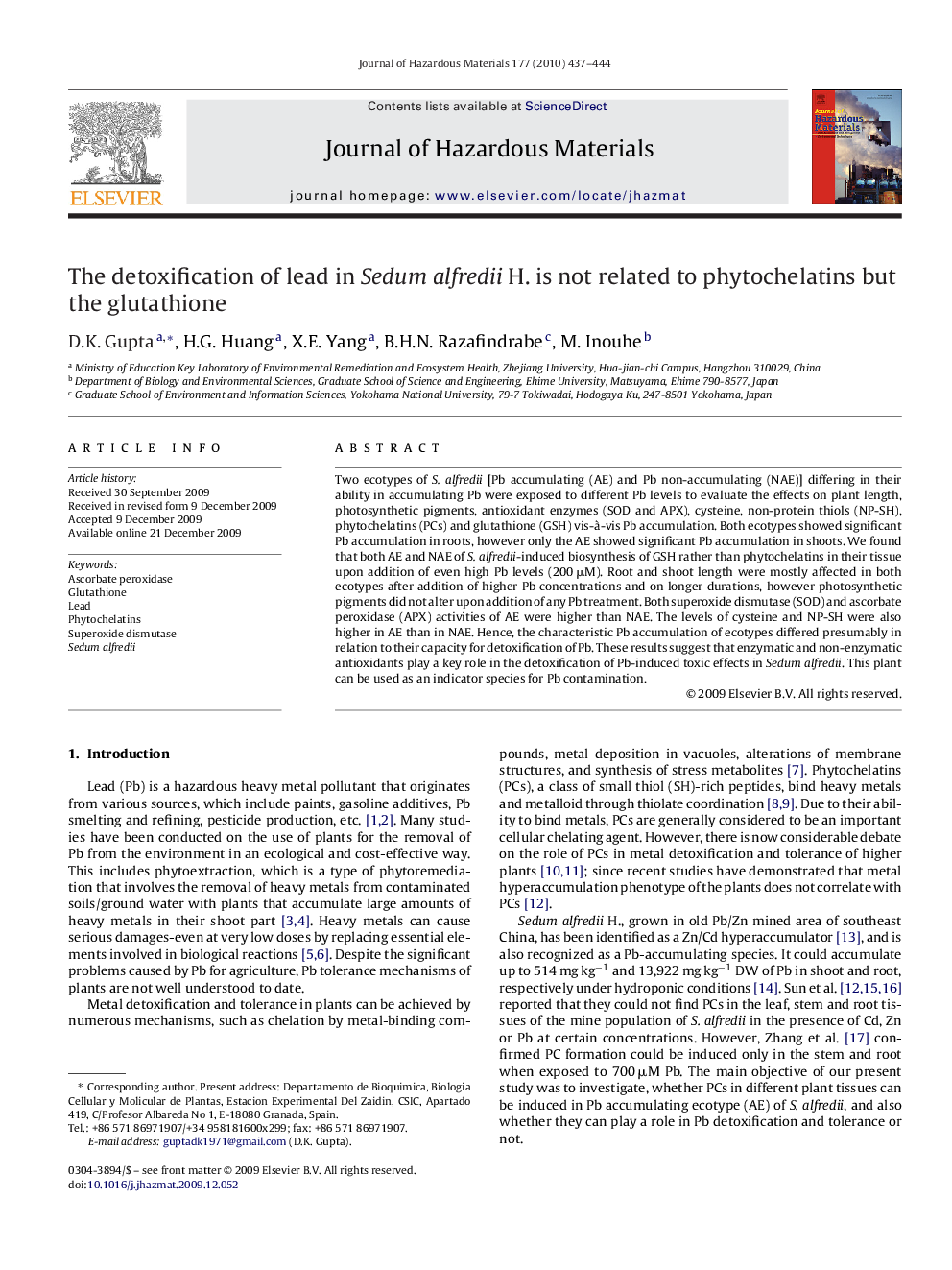| کد مقاله | کد نشریه | سال انتشار | مقاله انگلیسی | نسخه تمام متن |
|---|---|---|---|---|
| 580881 | 1453151 | 2010 | 8 صفحه PDF | دانلود رایگان |
عنوان انگلیسی مقاله ISI
The detoxification of lead in Sedum alfredii H. is not related to phytochelatins but the glutathione
دانلود مقاله + سفارش ترجمه
دانلود مقاله ISI انگلیسی
رایگان برای ایرانیان
کلمات کلیدی
موضوعات مرتبط
مهندسی و علوم پایه
مهندسی شیمی
بهداشت و امنیت شیمی
پیش نمایش صفحه اول مقاله

چکیده انگلیسی
Two ecotypes of S. alfredii [Pb accumulating (AE) and Pb non-accumulating (NAE)] differing in their ability in accumulating Pb were exposed to different Pb levels to evaluate the effects on plant length, photosynthetic pigments, antioxidant enzymes (SOD and APX), cysteine, non-protein thiols (NP-SH), phytochelatins (PCs) and glutathione (GSH) vis-à -vis Pb accumulation. Both ecotypes showed significant Pb accumulation in roots, however only the AE showed significant Pb accumulation in shoots. We found that both AE and NAE of S. alfredii-induced biosynthesis of GSH rather than phytochelatins in their tissue upon addition of even high Pb levels (200 μM). Root and shoot length were mostly affected in both ecotypes after addition of higher Pb concentrations and on longer durations, however photosynthetic pigments did not alter upon addition of any Pb treatment. Both superoxide dismutase (SOD) and ascorbate peroxidase (APX) activities of AE were higher than NAE. The levels of cysteine and NP-SH were also higher in AE than in NAE. Hence, the characteristic Pb accumulation of ecotypes differed presumably in relation to their capacity for detoxification of Pb. These results suggest that enzymatic and non-enzymatic antioxidants play a key role in the detoxification of Pb-induced toxic effects in Sedum alfredii. This plant can be used as an indicator species for Pb contamination.
ناشر
Database: Elsevier - ScienceDirect (ساینس دایرکت)
Journal: Journal of Hazardous Materials - Volume 177, Issues 1â3, 15 May 2010, Pages 437-444
Journal: Journal of Hazardous Materials - Volume 177, Issues 1â3, 15 May 2010, Pages 437-444
نویسندگان
D.K. Gupta, H.G. Huang, X.E. Yang, B.H.N. Razafindrabe, M. Inouhe,